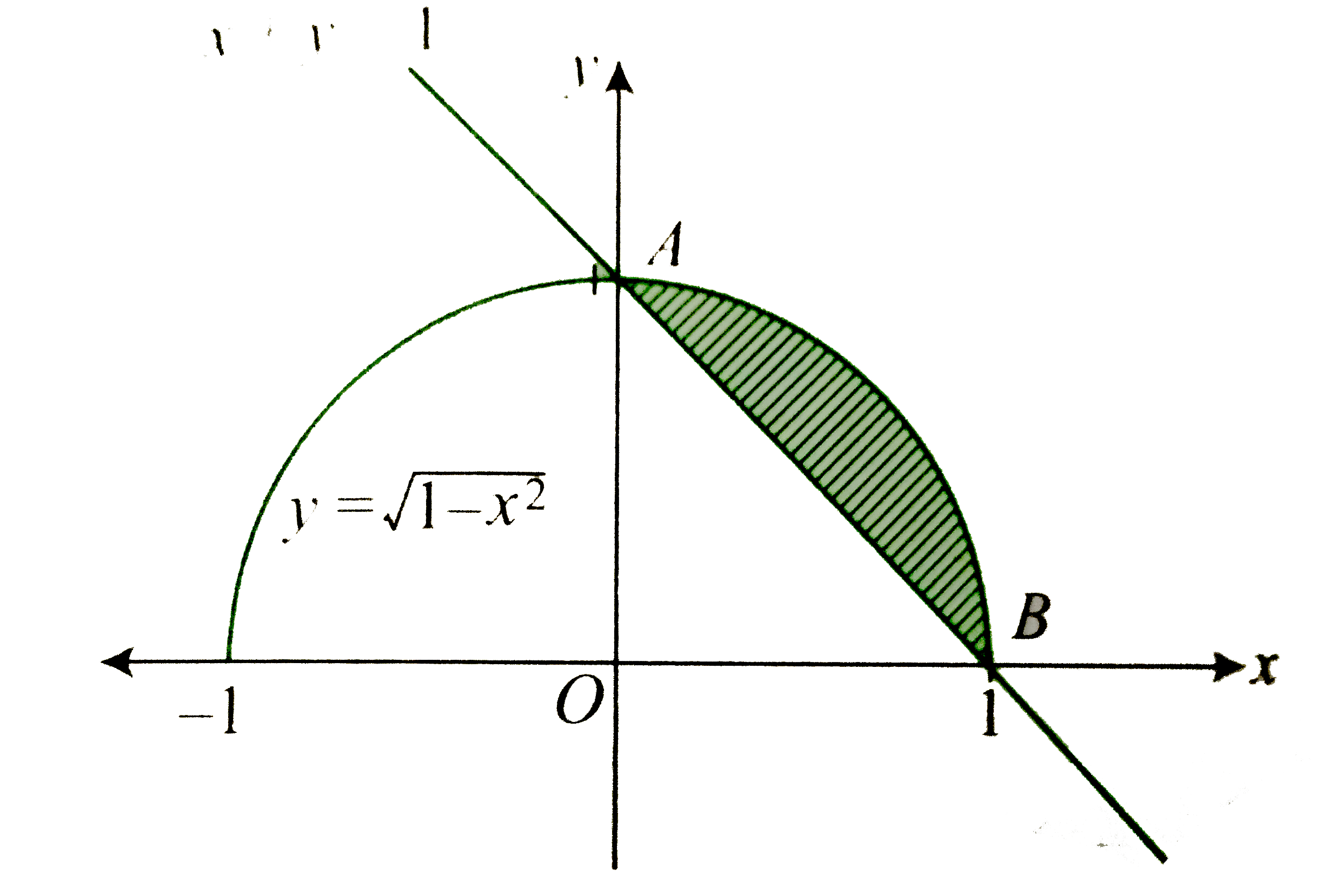Let be a continuous function such that Then, which of the following statements(s) is (are)) TRUE?
A
The curve y=f(x) passes through the point (1,2)
B
The curve y=f(x) passes through the point (2,-1)
C
The area of the region
D
The area of the region
Video Solution
Text Solution
The correct Answer is:B, C
Differentiating w.r.t. x, we get
Subtracting (i) from (ii), we get
This is linear differential equation.
Therefore, solution is
Putting x=0 in (i), we get f(0)=1.
So, from above equation, we have
Now, (iii) reduces to y=1-x, which passes through point (2,-1).
represents the region above the line represents the region inside the semicircle (lying above x-axis)
So, common region is as the shaded one in the following figure :

Area of the shaded region
=Area of quarter of the circle - Area of triangle OAB
|
Topper's Solved these Questions
- AREABOOK - CENGAGECHAPTER - AREAEXERCISE - Multiple Correct Answer Type
3 Videos
- AREABOOK - CENGAGECHAPTER - AREAEXERCISE - Single Correct Answer Type
27 Videos
- AREABOOK - CENGAGECHAPTER - AREAEXERCISE - JEE Main Previous Year
10 Videos
- APPLICATIONS OF DERIVATIVESBOOK - CENGAGECHAPTER - APPLICATIONS OF DERIVATIVESEXERCISE - Question Bank
29 Videos
- AREA UNDER CURVESBOOK - CENGAGECHAPTER - AREA UNDER CURVESEXERCISE - Question Bank
20 Videos
Similar Questions
Knowledge Check
If f(x)=∫x0et2(t−2)(t−3)dt for all x∈(0,∞) , then
Af has a local maximum at x=2Bf is decreasing on (2,3)Cthere exists some c∈(0,∞) such that f(c)=0Df has a local minimum at x=3Let f:R→R be a differentiable function such that f(x)=x2+∫x0e−tf(x−t)dt.
y=f(x) isAinjective but not surjectiveBsurjective but not injectiveCbijectiveDneither injective nor surjectiveLet f:R→R be a differentiable function such that f(x)=x2+∫x0e−tf(x−t)dt.
f(x) increases forAx>1Bx<−2Cx>2Dnone of these
Let f(x) be a differentiable function such that f(x)=x2+∫x0e−tf(x−t)dt then ∫10f(x)dx=
View SolutionLet f(x)=∫x0et.sin(x−t)dtandg(x)=f(x)+f''(x). Which of the following statements are correct ?
View SolutionIf a continuous function f satisfies ∫f(x)0t3dt=x2(1+x) for all x≥0 then f(2)
View Solutionif f be a differentiable function such that f(x)=x2∫x0e−tf(x−t). dt. Then f(x) =
View SolutionLet f:[0,1]→[0,∞] be a continuous function such that ∫10f(x)dx=10. Which of the following statements is NOT necessarily true ?
View Solution
